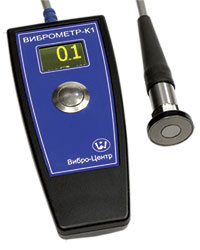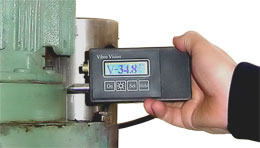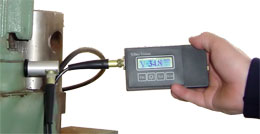Vibration measurement of electric motors
The amount of vibration is measured on all bearings of electric motors in the horizontal-transverse (perpendicular to the axis of the shaft), horizontal-axial and vertical directions.
The measurement in the first two directions is carried out at the level of the shaft axis, and in the vertical direction - at the highest point of the bearing.
Vibrations of electric motors are measured with vibrometers.
Increased vibrations can be caused by electromagnetic or mechanical or other causes.
Electromagnetic causes of vibrations in electric motors:
-
incorrect connection of individual parts or phases of the windings;
-
insufficient stiffness of the stator housing, as a result of which the active part of the armature is attracted to the poles of the inductor and vibrates; closures of various types in the windings of electric motors;
-
interruptions of one or more parallel branches of the windings;
-
uneven air gap between stator and rotor.
Mechanical causes of vibrations in electric motors:
-
incorrect alignment of the electric motor with the working machine;
-
clutch malfunctions;
-
shaft curvature;
-
imbalance of the rotating parts of the electric motor or working machine;
-
loose or jammed rotating parts.
Technical characteristics of vibrometers

Vibrometer — K1
The small size K1 vibrometer is designed to measure vibration in the dimension of vibration velocity (mm/s) in the standard frequency range of 10 to 1000 Hz. Thanks to the presence of only one control button, the device can be used even by unqualified personnel.
The advantages of using the «Vibrometer-K1» device are:
-
bright screen that allows operation in a wide temperature range, up to -20 degrees;
-
small size and weight;
-
possibility of continuous operation from built-in batteries.
Vibro Vision - portable vibrometer
The small size vibrometer «Vibro Vision» is designed for control of the vibration level and express diagnosis of defects of rotating equipment. It allows you to measure the general level of vibration (RMS, peak, swing), timely diagnose the condition of the rolling bearings.
The vibrometer registers signals in terms of vibration acceleration, vibration velocity, vibration displacement using a built-in or external sensor. The photo shows a vibration measurement from the device using the built-in vibration sensor. In this mode, the vibrometer is most convenient for simple and operational measurements.
With the help of an external sensor mounted on the monitored equipment with the help of a magnet or with the help of a probe, more complex measurements can be made. In the second photo, an external vibration sensor is installed in place of the vibration control on a magnet that is connected to the device.
Additional functions of the «Vibro Vision» vibrometer are the determination of the condition of the rolling bearings based on the calculation of the kurtosis of the vibration acceleration and the simplest vibration signal analyzer. The device allows evaluation of the shape of the vibration signal (256 readings) and analysis of the spectrum of the vibration signal (100 lines). This makes it possible to diagnose some defects "on the spot", for example, imbalance, misalignment. These features make it possible to diagnose the most common defects in rotating equipment with this simple and inexpensive device.
All information in the vibrometer is displayed on a graphic screen with an extended temperature range, its backlight is provided. An example of a screen image in vibration acceleration recording mode is shown in the figure.


The vibrometer can operate at ambient temperatures from minus 20 to plus 50 degrees and relative air humidity up to 98%, without moisture condensation.
«Vibro Vision» is powered by two built-in rechargeable batteries of AA size, it is allowed to operate from two batteries of the same size.
